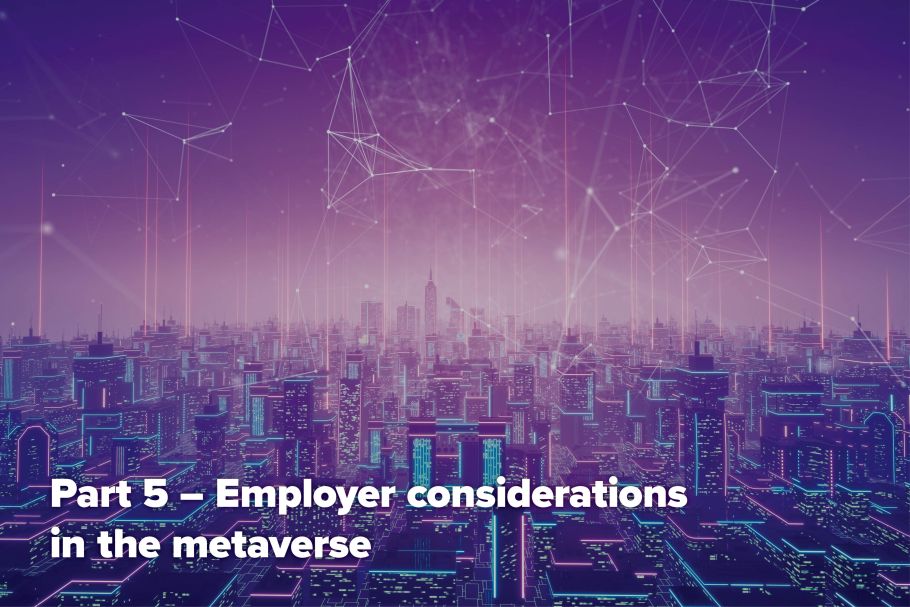
Contributors: Joanna Boag-Thomson
Date published: 7 February 2023
The Metaverse series – Part 2 – Non-fungible tokens (NFTs)
What is an NFT?
NFT stands for ‘non-fungible token.’ It is a type of crypto-asset which is connected to or represents an associated asset – this will usually be a digital asset. The most common association with NFTs is digital artwork, with a well-known example being of the Bored Ape Yacht Club Apes. Whilst less common in practice however, NFTs can also be linked to any physical asset which is capable of being represented digitally (such as clothes or a painting). In October 2022, artist Damien Hirst made headlines around the world by telling the purchasers of artwork from his latest collection that they had to choose either the physical artwork or the NFT representing it. He stated that “the value of art…will be transferred to the NFT as soon as they are burnt.” NFTs have no tangible form of their own and only exist online. They can be bought and sold in this sphere, usually via cryptocurrency.
How do NFTs work?
A common source of confusion, when it comes to NFTs, arises from the fact that an NFT is separate from the asset that it is linked to. Using our earlier example, if an individual purchased an NFT of a Bored Yacht Club Ape, this piece of media can still be viewed or copied an infinite number of times.
This may lead some to question the rationale for investing in or purchasing NFTs. The key to understanding the inherent worth and value of an NFT is therefore to understand the concept of ‘non-fungible.’ An NFT is a unique chain of code, which sits on the blockchain and which proves ownership of the digital or physical asset. As each NFT is unique, it cannot be exchanged for another of the same kind. This is in contrast to, for example, physical money – two £10 notes or four £5 have the same worth as one £20 note, allowing these to be exchanged seamlessly. By contrast, an NFT cannot be traded in this fashion. They are one-of-a-kind trading cards – no two NFTs are identical meaning that one NFT is never equivalent to another. Likewise, the value of traditional artwork lies in the fact that they are one of a kind.
NFTs can therefore be thought of as digital certificates which record ownership of a digital or physical asset. NFTs recognise that digital files can be easily and seemingly infinitely replicated and address this issue by creating a digital certificate of ownership, therefore ensuring the relevant digital assets only have one actual owner. While anyone can copy or view the work, the buyer of the NFT owns a token that proves they own the original. This record of ownership is stored on the blockchain, which is maintained by thousands of computers all over the world. A real-world comparison can be made to the Mona Lisa – while there are endless copies of this painting, the only original is safely stored at the Louvre in Paris.
Who uses NFTs?
NFTs are increasingly being utilised in a wide variety of contexts. The value of sports NFTs is expected to rise by $75bn between 2021 and 2025. Traditionally sports fans would buy packs of trading cards or collectables, however sports NFTs can take on a range of forms, such as photos, collectables and clips. The most valuable sport NFT is the Statue of LeBron, valued at $21.6m. Musicians, fashion designers and drinks companies have also jumped on the bandwagon. The latter are increasingly moving away from NFTs as being solely linked to a digital asset, and are instead linking these to real-world experiences. For example, rum brand Dictador entered the NFT sphere by launching ten limited edition bottles of 1976 Dictador Generations Rum through NFT. The NFT is priced at $45,486, and comes with, amongst other things, a personalised expositor that opens with a thumbprint, a signed album and an invitation to private dinner for two with the master blender Hernan Parra. Brands are increasingly selling NFTs which are redeemable for physical products, meaning that the metaverse is a convenient marketplace for the trade of those goods.
The future of NFTs – a bubble waiting to burst?
One of the most famous examples of an NFT is that of Twitter founder Jack Dorsey auctioning off an NFT of the first ever tweet (“just setting up my twttr”) for $25m. The purchaser told Forbes that he paid this sum due to the NFT’s uniqueness and association with a company as valuable as Twitter. He then proceeded to sell on the NFT, and while he was expecting proceeds to exceed $25m, when the auctioned closed there were only seven offers and these ranged in value from $6 to $277.
While NFTs are seen as a key component of the interconnectivity of the metaverse, as they allow goods tokenised in one part of the metaverse to be used in another part of the metaverse, recent developments, such as the Twitter example detailed above, have led many to question whether they are simply a bubble waiting to burst. Forbes analysts suggest that “the market isn’t ready to jump into literally anything that a celebrity or someone of high stature might release… [2021] was a really good time for that, but a lot of people have grown weary of cash-grab tactics.”
While we may be in the midst of the NFT bubble, and bubbles always burst, as things currently stand NFTs are a key component of the metaverse. It is likely that they will remain a core tenet of the metaverse, and that their use and nature will evolve over time to reflect market conditions and emerging trends.
The Metaverse series
- Part 1 – Introduction to the metaverse
- Part 2 – Non-fungible tokens (NFTs)
- Part 3 – Brand considerations in the metaverse
- Part 4 – Protection of intellectual property rights
- Part 5 – Employer considerations in the metaverse
If you would like further information about the topics covered in this series or the services that the Media and technology team provide, please contact Joanna Boag-Thomson.
Contributors:
Joanna Boag-Thomson
Partner
To find out more contact us here
Expertise: Commercial Contracts, Corporate and Commercial, Intellectual Property
Sectors: Pharma, Biotech, Medtech, and Digital Health, Technology and Life Sciences
















